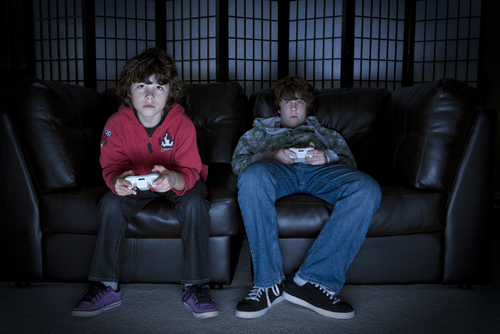Teens who have challenges limiting video game or screen time may struggle with impulse control disorders such as compulsive gambling, sex or shopping. Researchers spend time looking into what scientifically defines problematic gaming and came up with some general criteria to follow. Learn the signs of addiction and how to identify them in a teen.
Impulse Control Disorder?
When teens become addicted to gaming, it can be problematic but what if a teen is just playing a lot of video games? Is that the same as addiction? The three main symptoms of video game problems according to researchers begin with the following:
- Cravings, urges or growing tension before video gaming
- Relief or pleasure following the gaming experience
- Repeated gaming in spite of negative consequences
Not the Parents Problem
Video game addiction and problematic gaming are not defined by family issues or concerns with gaming. The relationship between teens and parents can often skew objective reasoning when it comes to addiction to gaming. Diagnostic criteria as outlined by professionals is generally the best way to determine if a problem with gaming does, indeed, exist.
Too Much Play
Effects from too much video-gaming vary person to person and may be positive or negative. In spite of mixed views and opinions, researchers have found little to no evidence of recreational play having a role in promoting negative consequences in a teen’s life. However, what a normal amount of play amounts to may vary teen to teen. How does one know when it crosses the line? The following are some basic guidelines experts agree on:
- Teens (boys, especially) who play more than 3 hours of video games per day may be more likely to smoke, use drugs or fight
- Pathological gaming has a median threshold of around 31-38 hours per week
Every teen is different but some of the information presented can be used to help compare a teen to the average norm.
Subjectivity
When trying to limit one’s own or a teen’s video game play time, it can be helpful to compare gaming addiction levels except that excessive gaming is subjective. Setting an internal standard of acceptability can be helpful when determining what and how much is too much. Quality of life issues may play a factor such as social, emotional or physical time spent in other activities. When a person starts to exhibit signs of video game addiction, an individual may consider real and immediate help to combat the negative consequences.
Sustain Recovery provides a safe, structured environment for adolescents to learn about living substance free. To learn more about the elements of transitioning to sober living, contact us about our programs and how it can help you.




